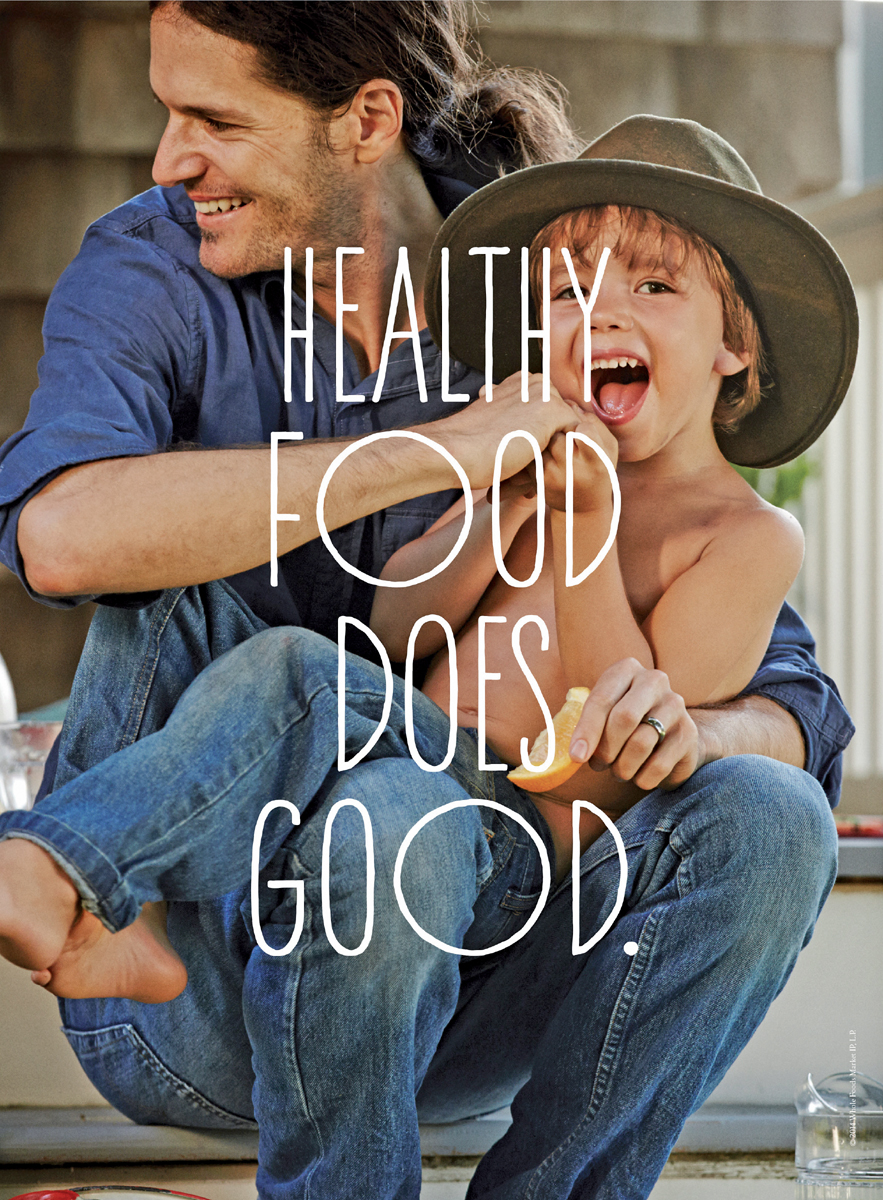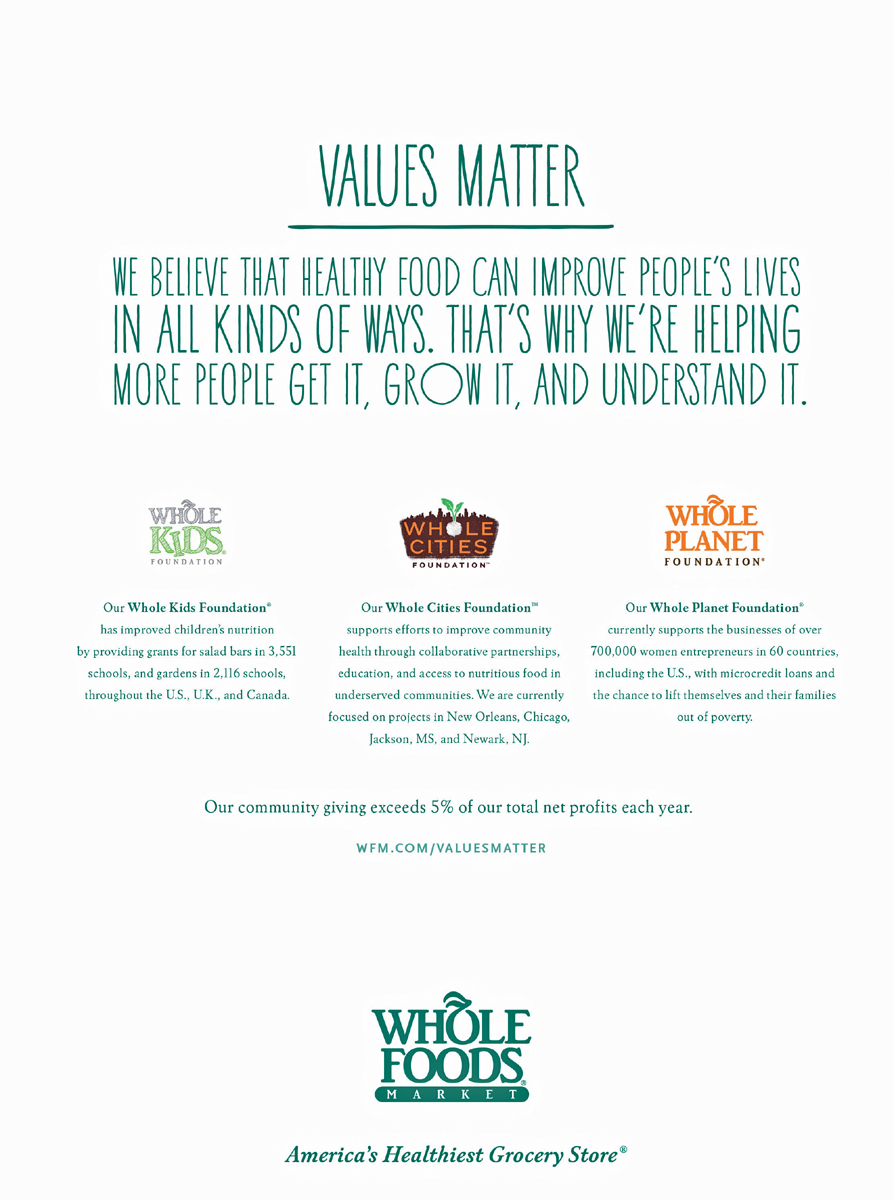3.20 A MODEL ANALYSIS
Let’s examine a two-
Let’s start by looking at appeals to ethos, pathos, and logos. Pathos is the easiest to consider in this ad: the image of the fairly young man with a little boy, likely father and son (note that the man is wearing a ring that looks like a wedding band), evokes feelings of a happy home life. On the second page, we see lots of green, which is the color of Whole Foods Market’s logo, the color of plants, and a color associated with growth and environmental movements. The font is casual and even a bit whimsical. All of these things are calculated to make you feel positive toward Whole Foods, and to subtly suggest that shopping there will help both children and the environment.


Advertisements usually rely primarily on appeals to pathos, but this one makes a concerted effort to appeal to logos. Look at the descriptions of the three foundations being featured and note the evidence being provided to support the claim that Whole Foods “does good”—as in good works. Opinions of experts are invoked in this ad in several ways. The Whole Cities Foundation, we are told, has developed “collaborative partnerships” that include educational efforts. The Whole Planet Foundation advises women entrepreneurs about microcredit loans, likely through experts in economics.
As you read the advertisement, note the “we” and “our” statements, which establish a corporate ethos positioning Whole Foods as concerned about more than just profits: “Our community giving exceeds 5% of our total net profits each year.” But, even more striking is the emphasis on “values”—shared values, which are the heart of ethos: “Values Matter” is a banner headline, suggesting both that Whole Foods has high values and that the corporation shares its customers’ values.
Notice also that this Whole Foods ad often makes more than one appeal with the same evidence. For instance, the Whole Planet Foundation appeals to logos with hard data (“700,000 women entrepreneurs in 60 countries”) and appeals to pathos by using positive language, such as “supports,” and “chance to lift themselves.” In fact, we see connotative language at work throughout the ad with the use (and repetition) of words that carry positive associations, such as “healthy,” “improve,” “support,” and “community.” The verbs are strong and active: “improve,” “helping,” “providing,” “supports,” “focused.” The sentence in large print on the second page—